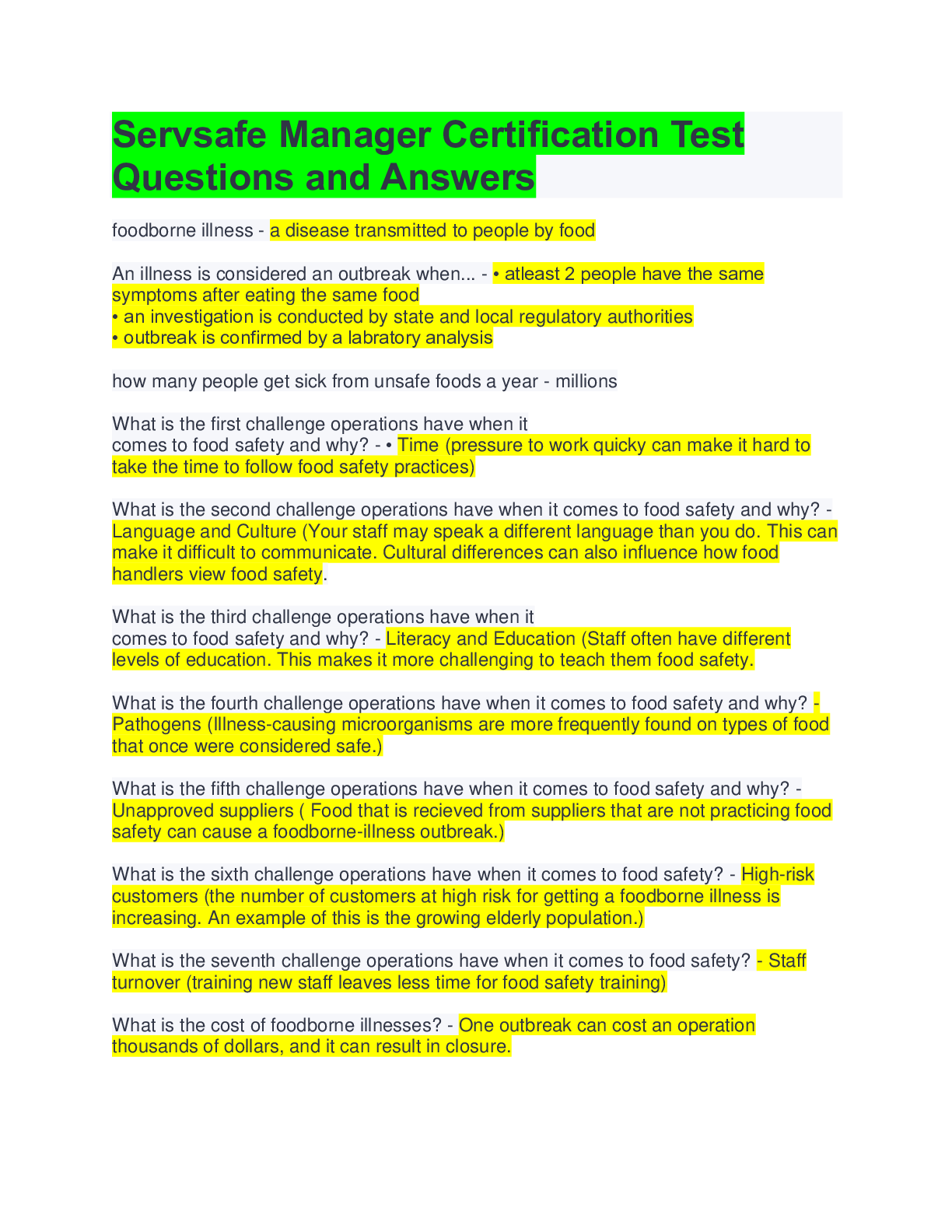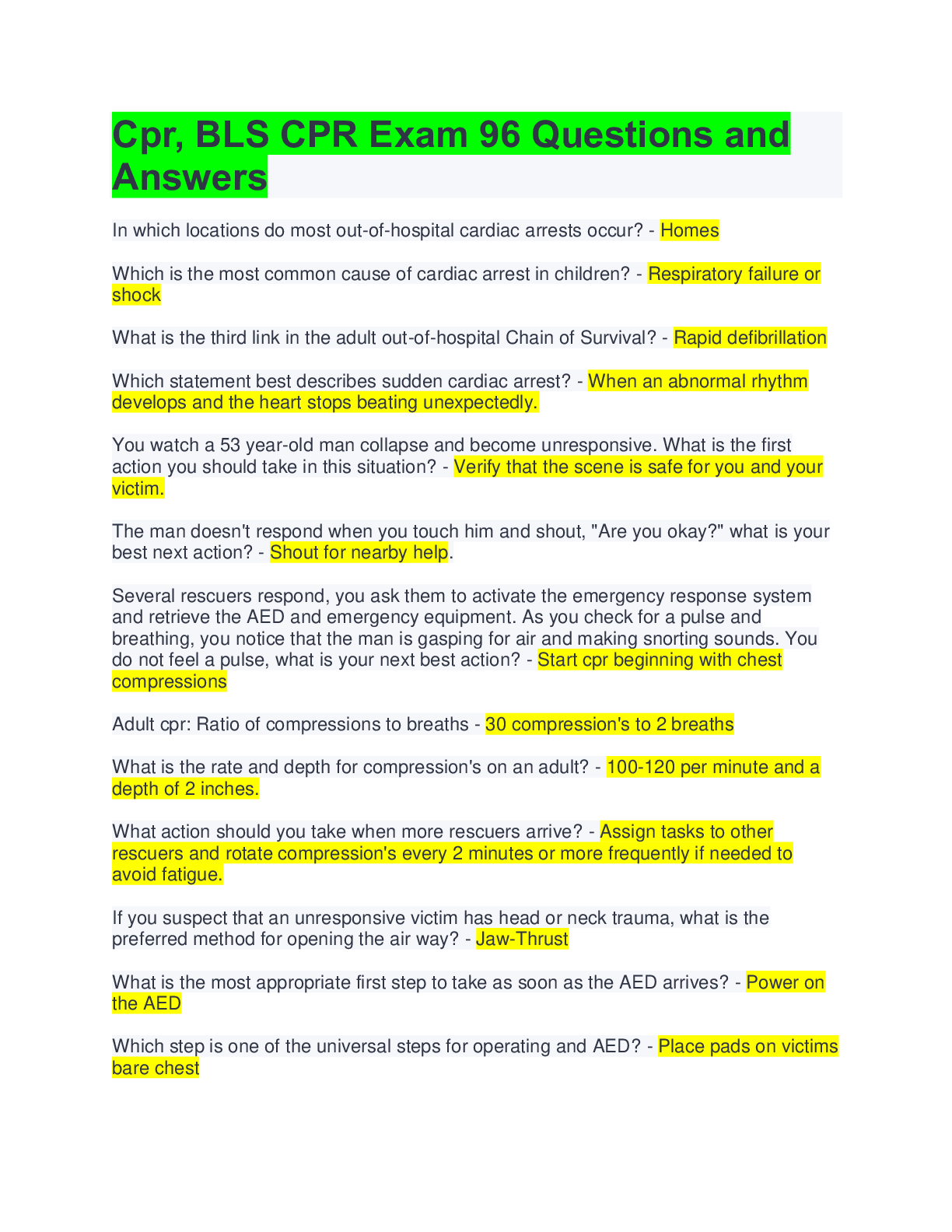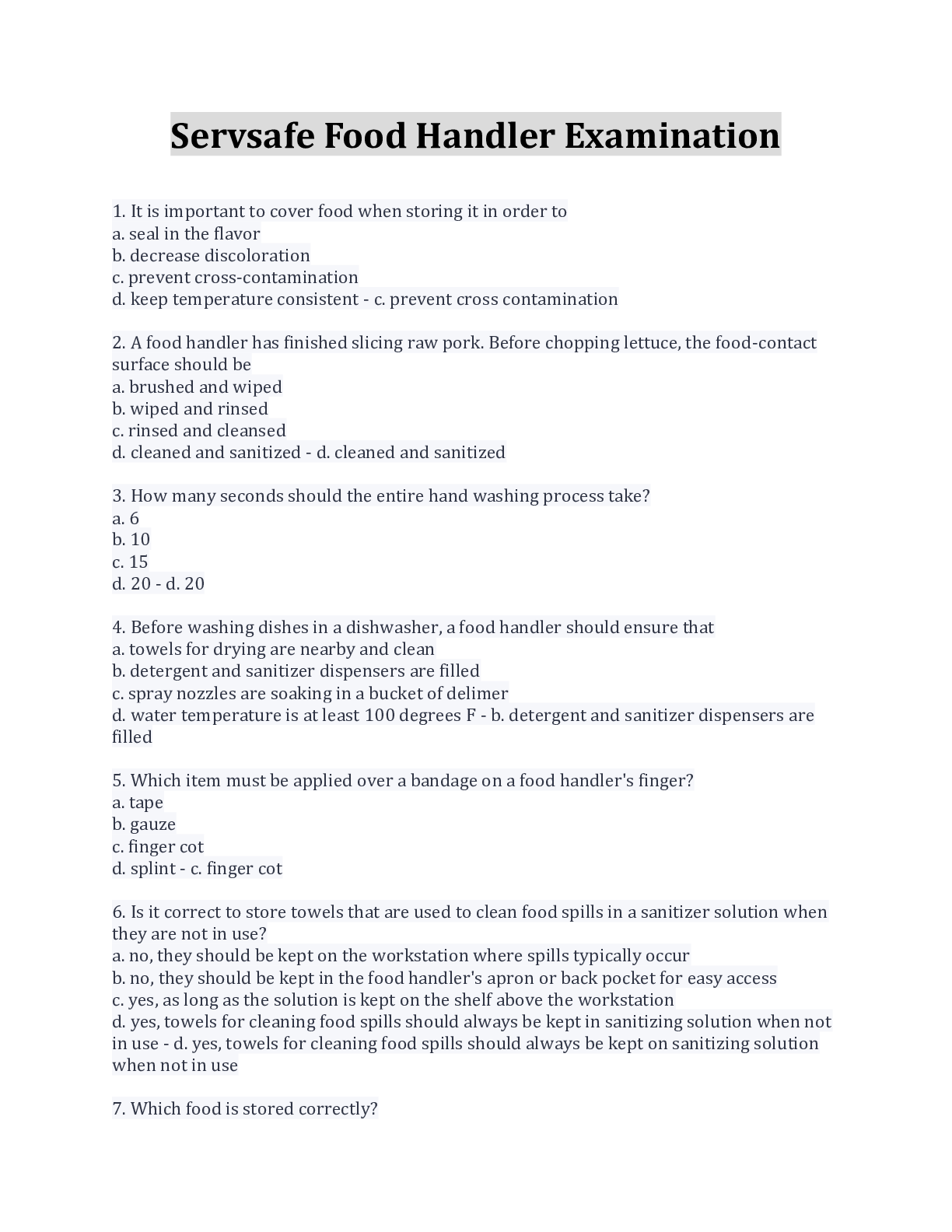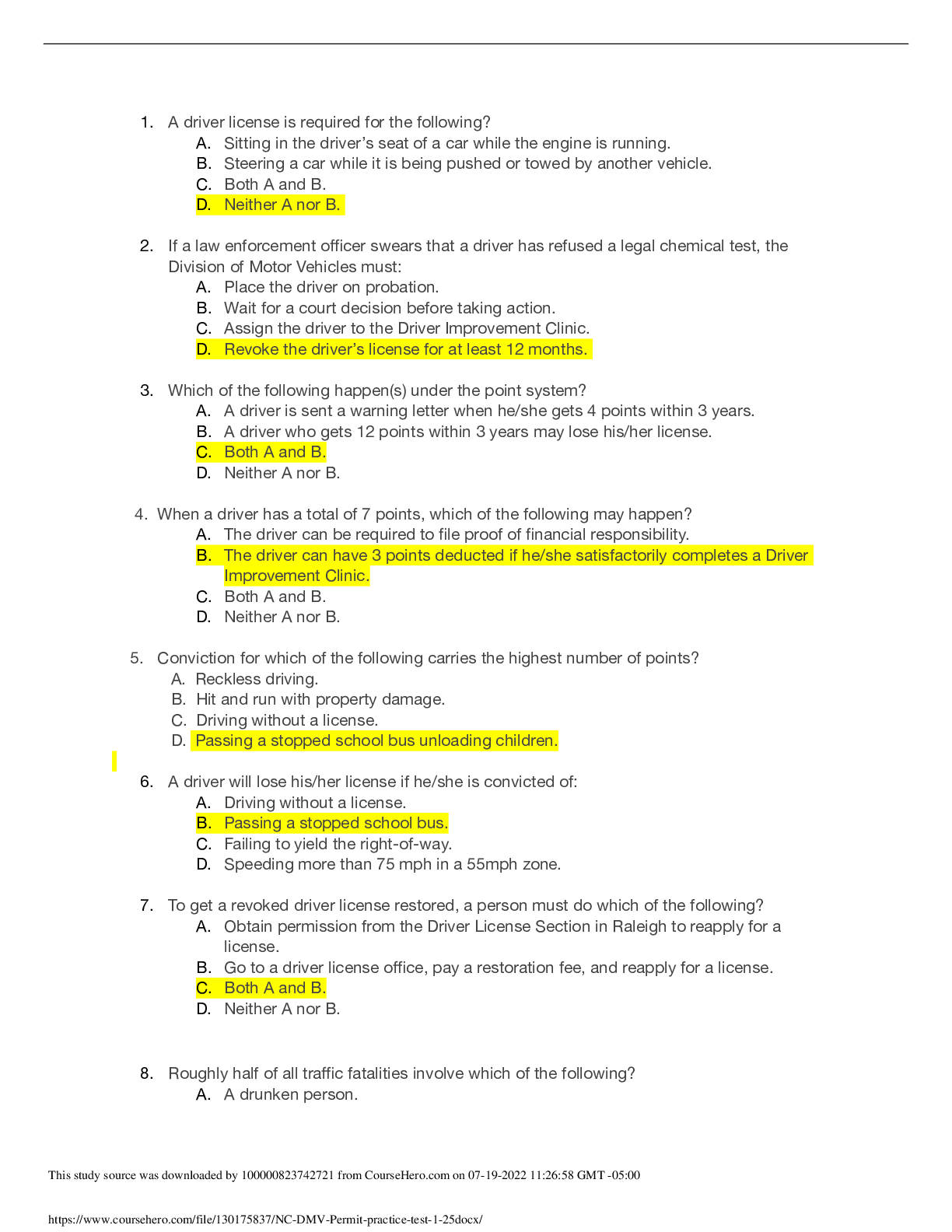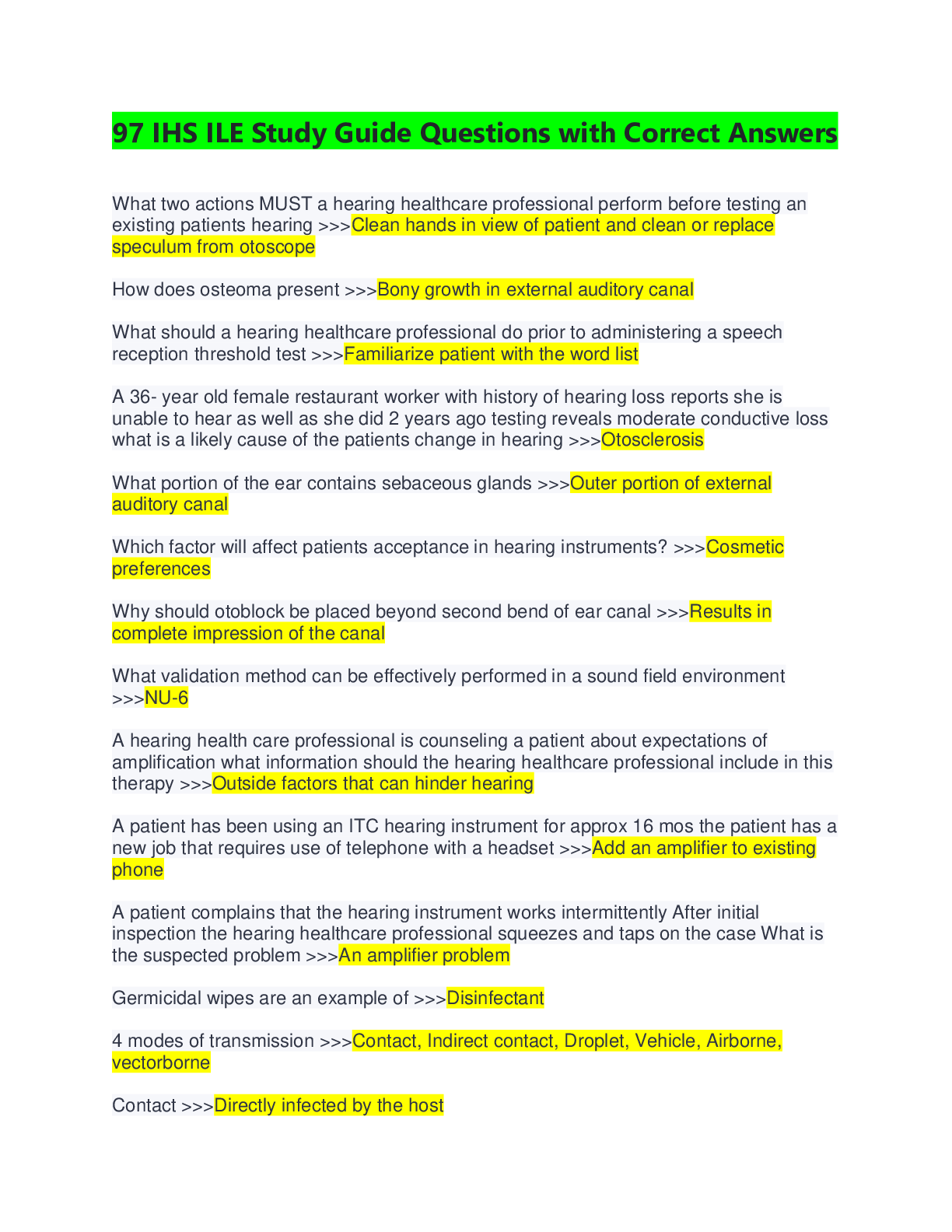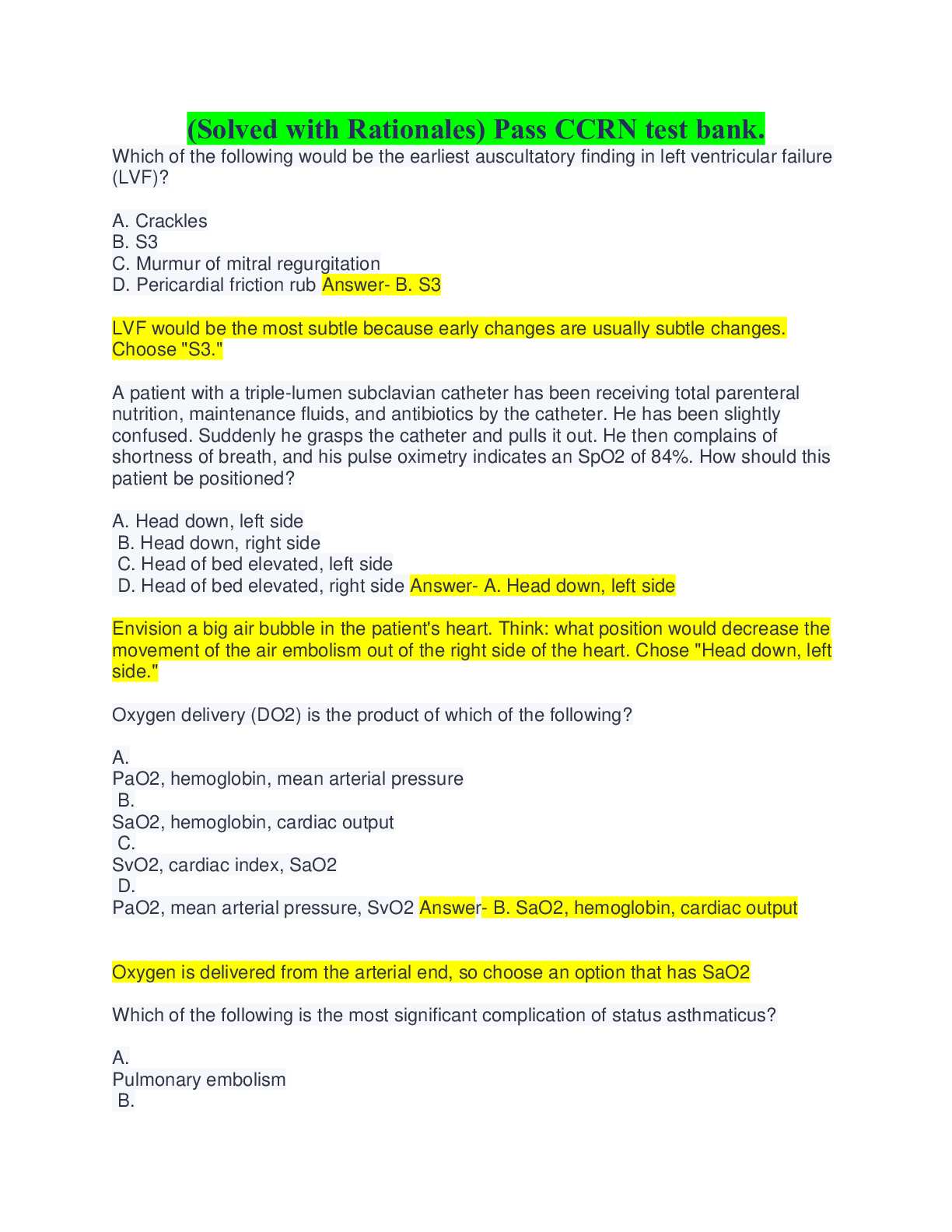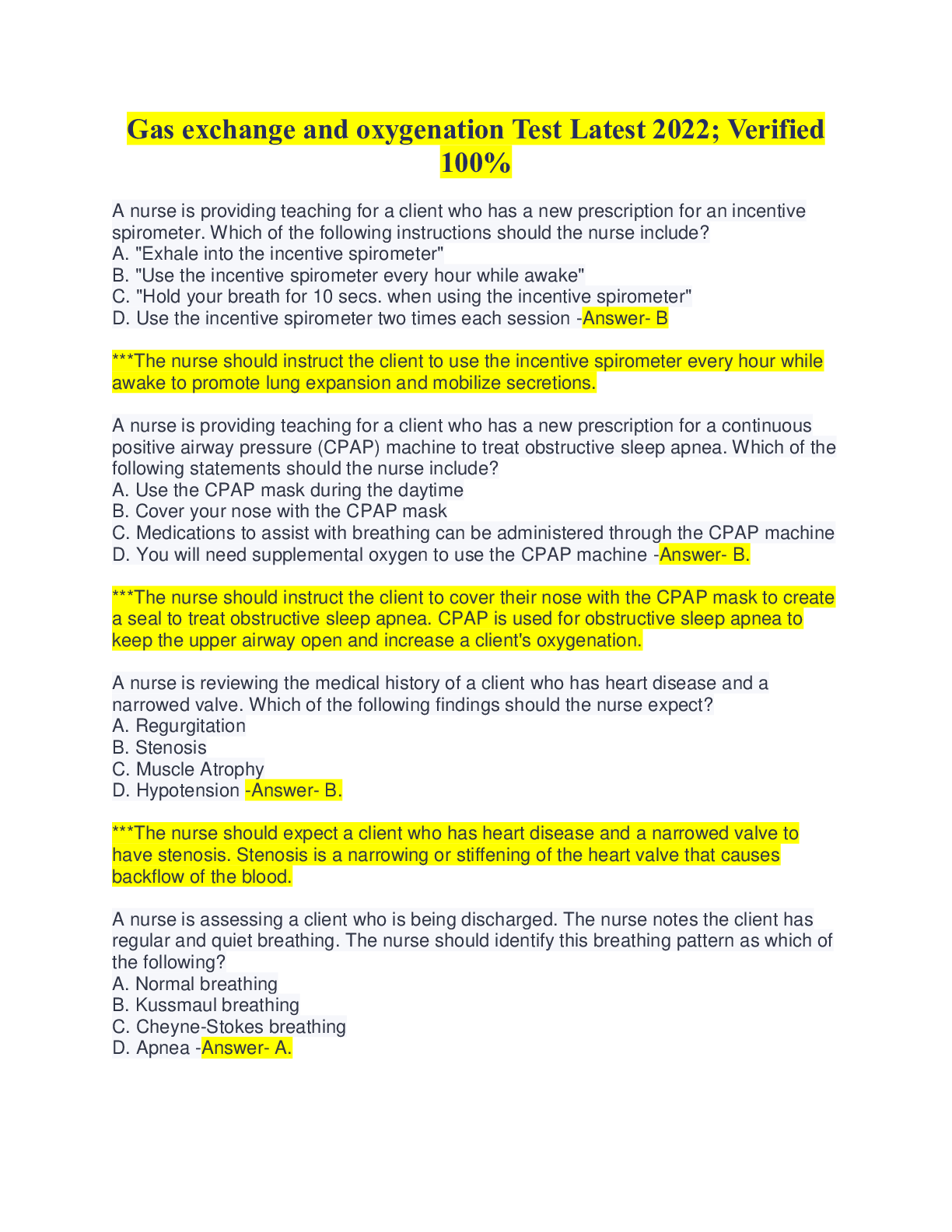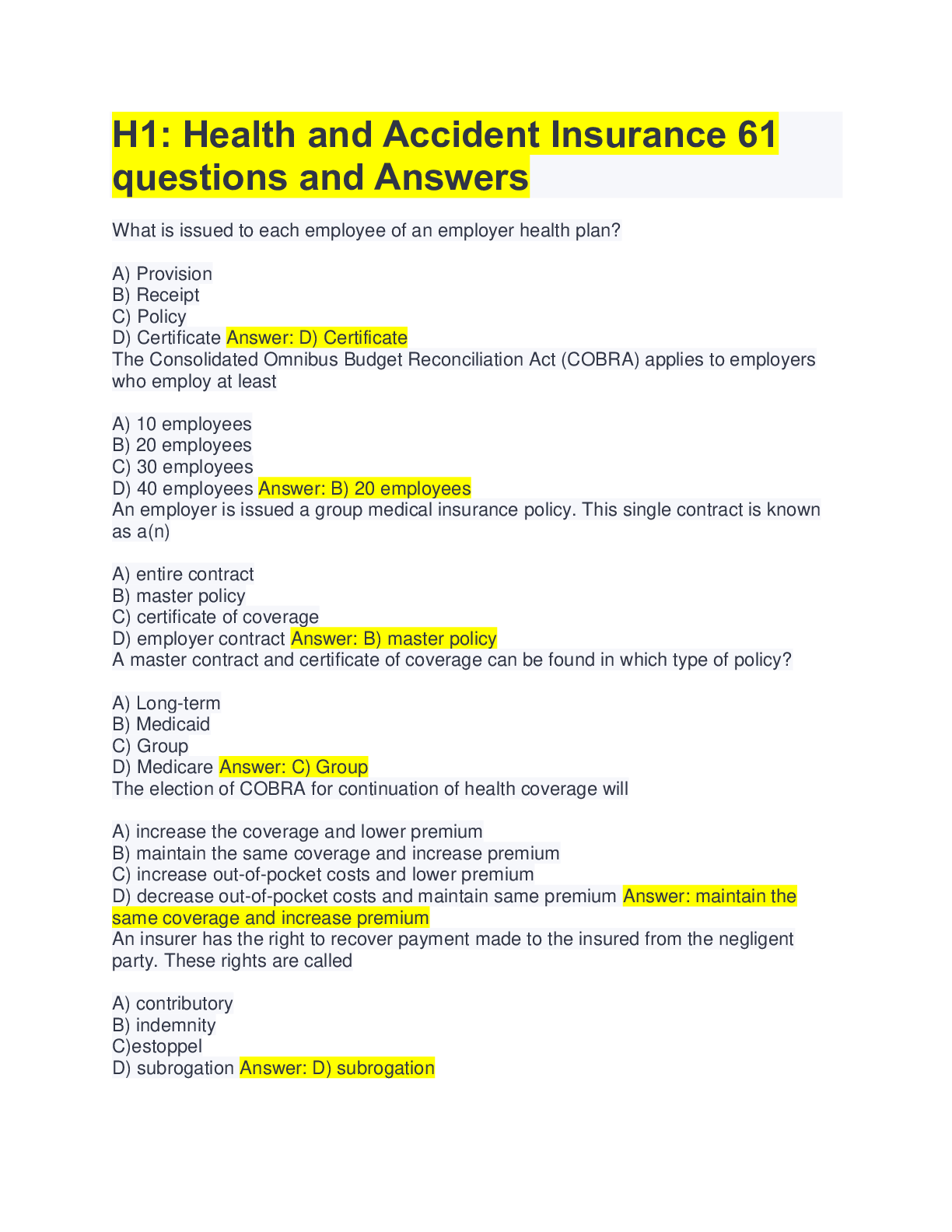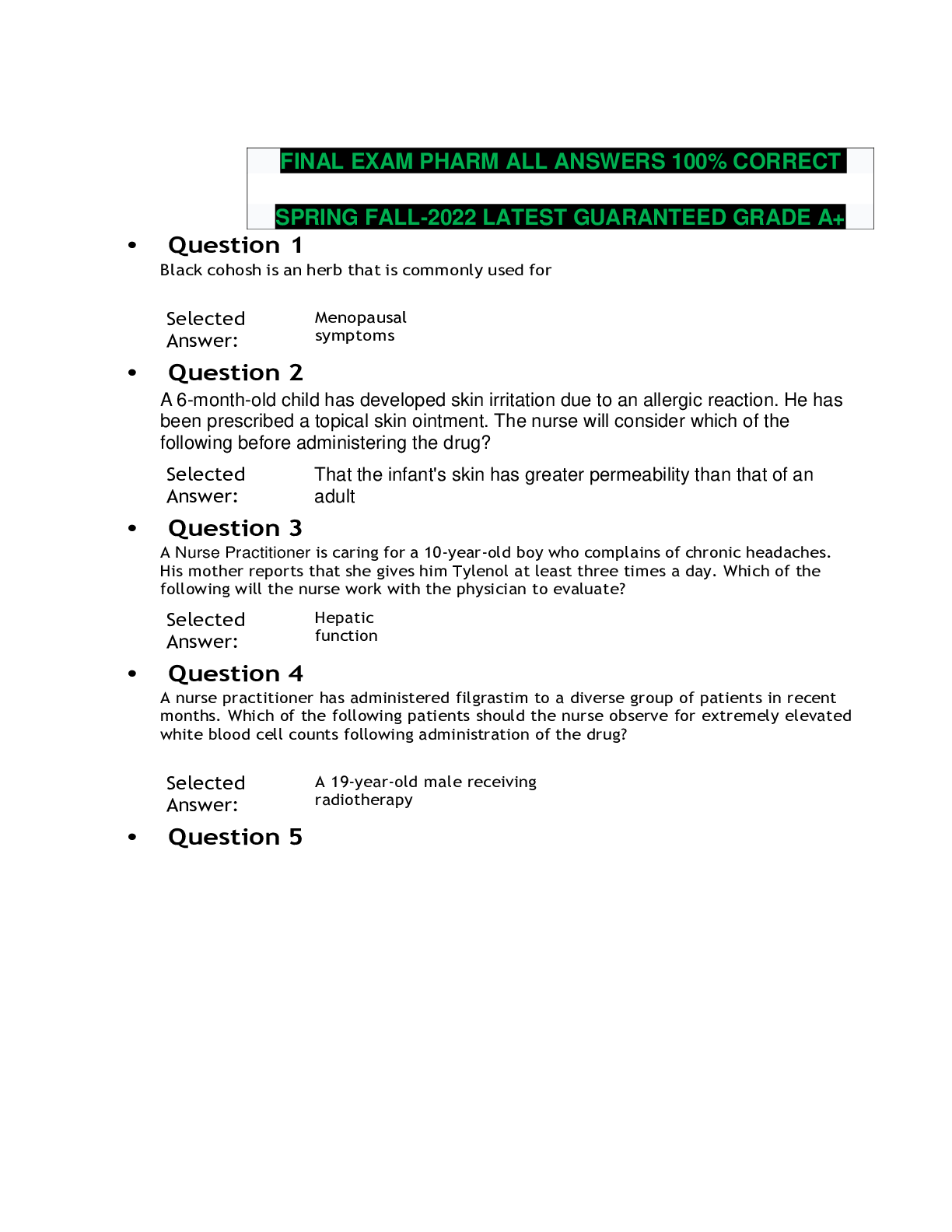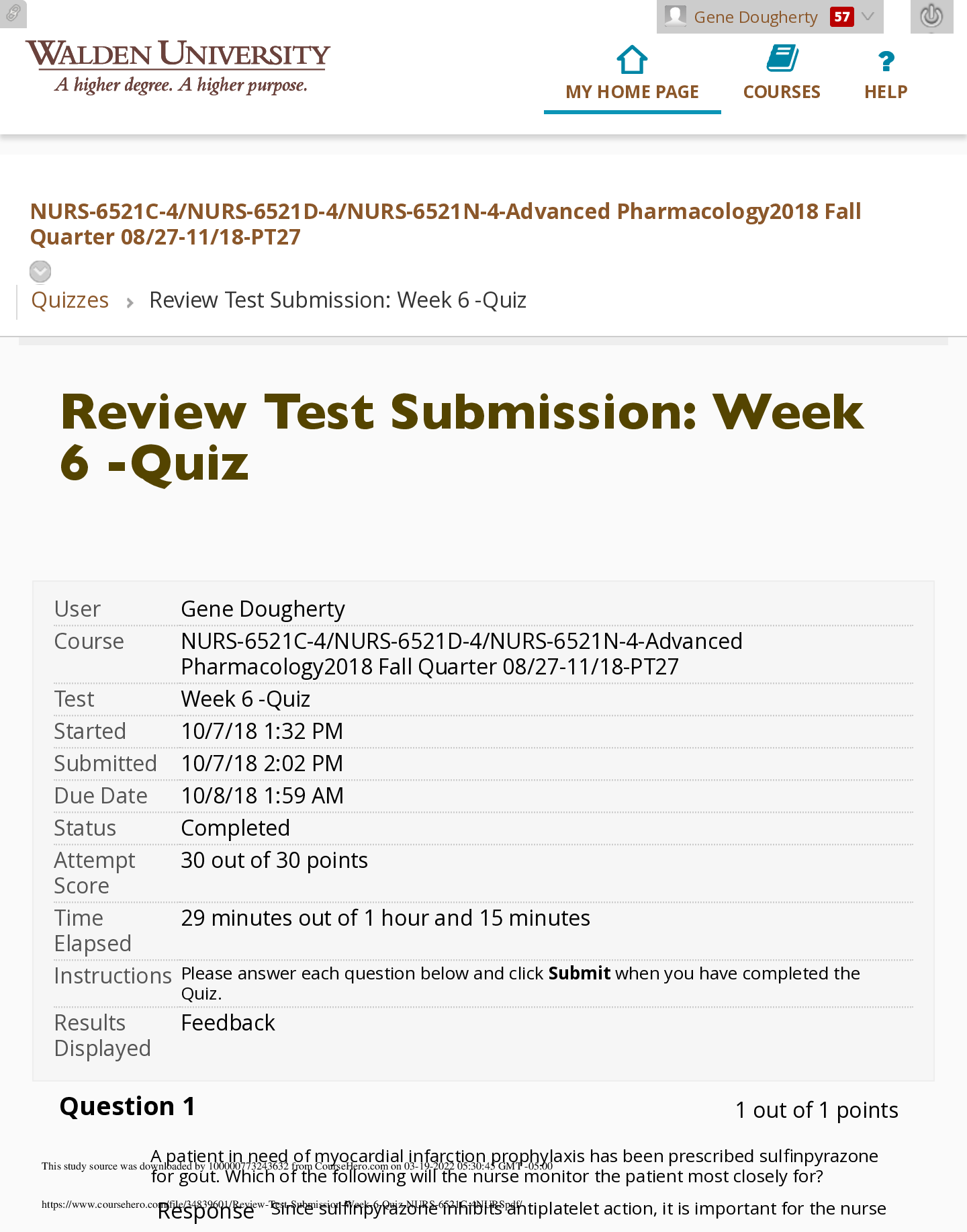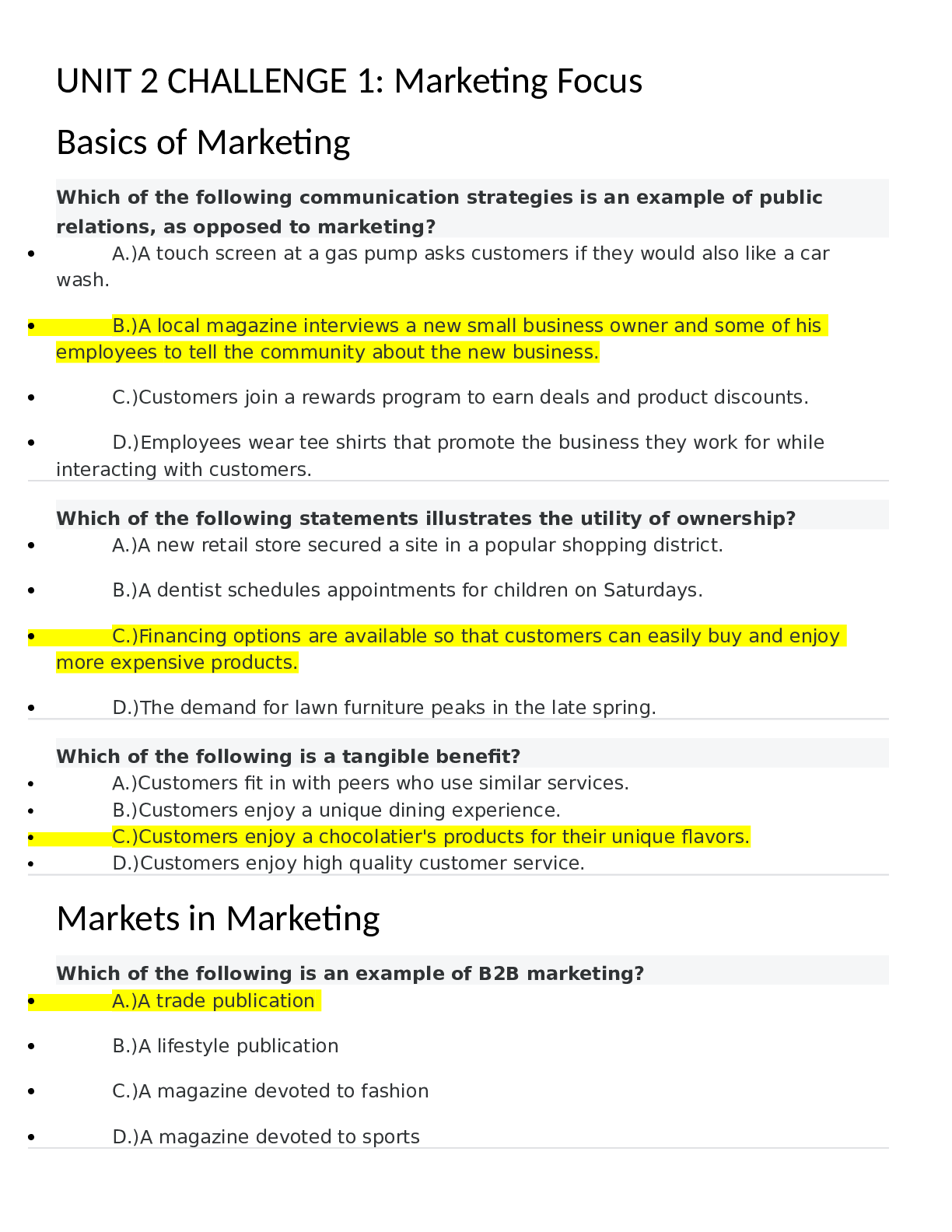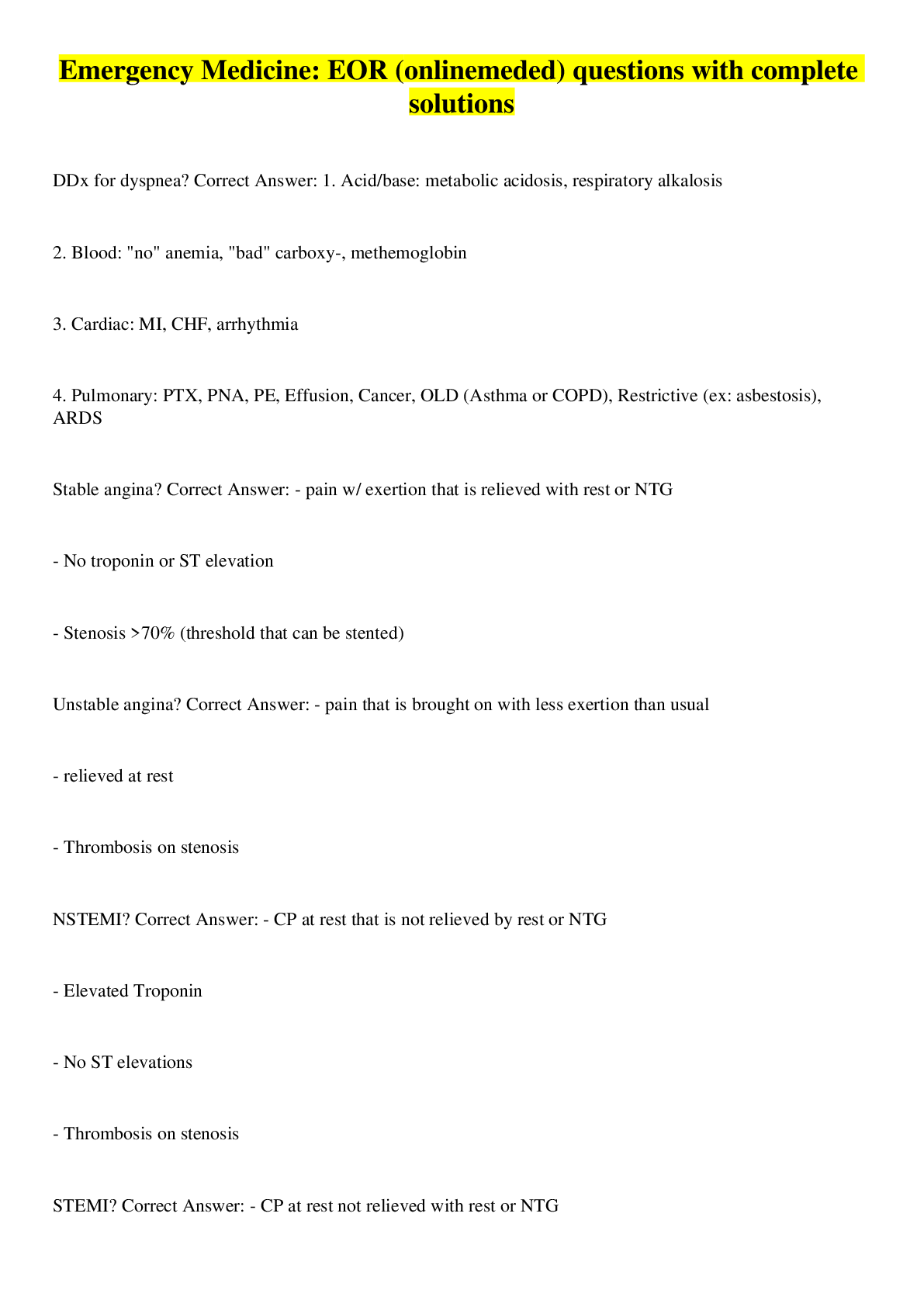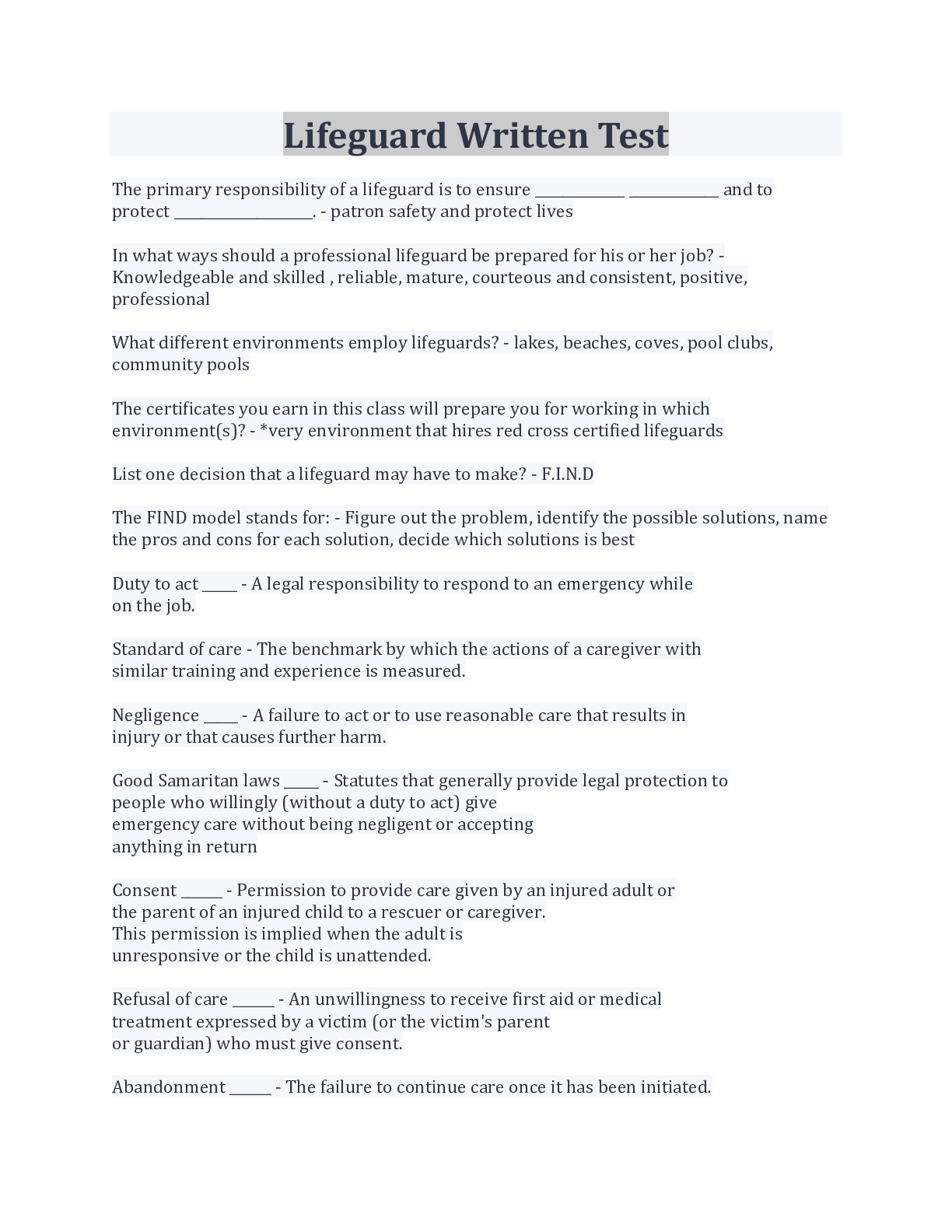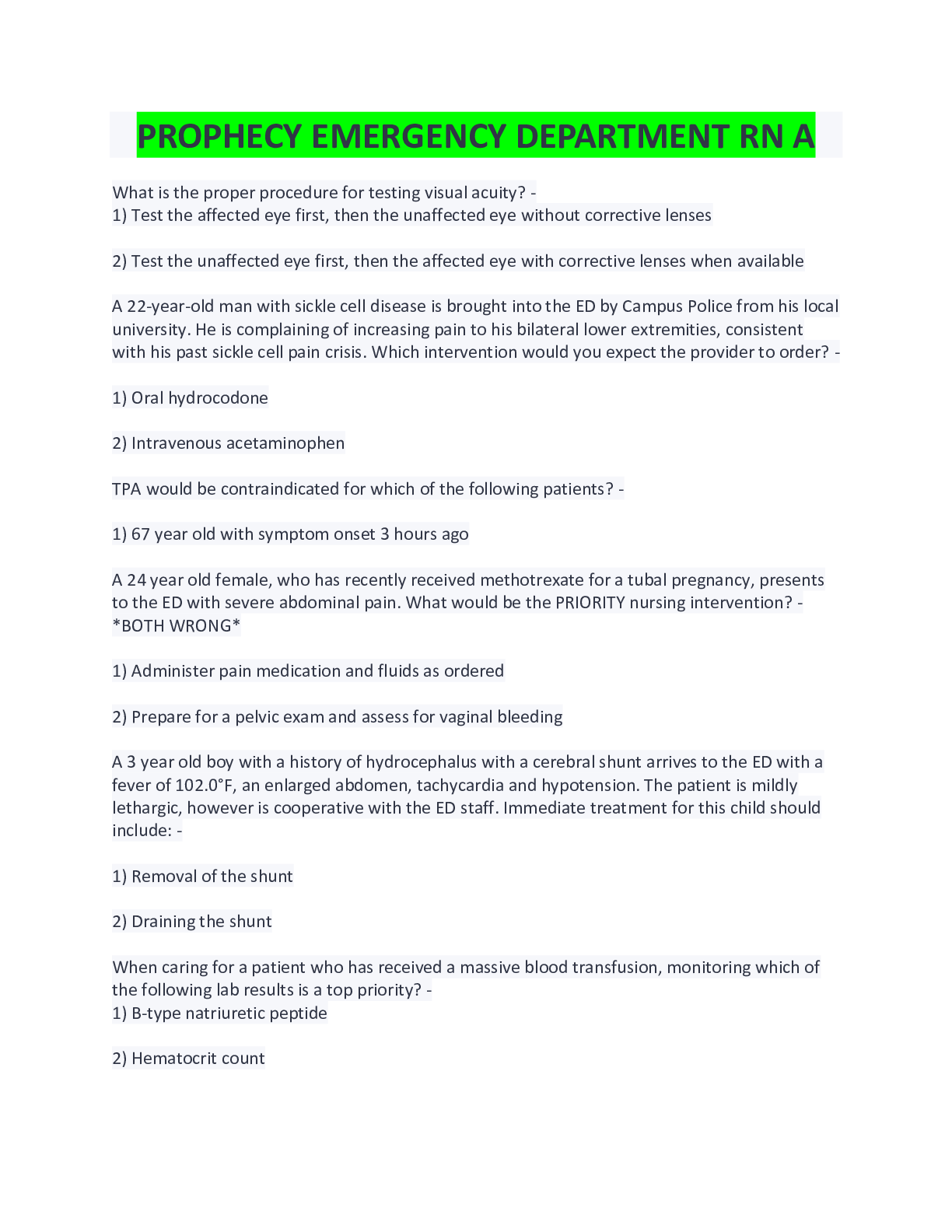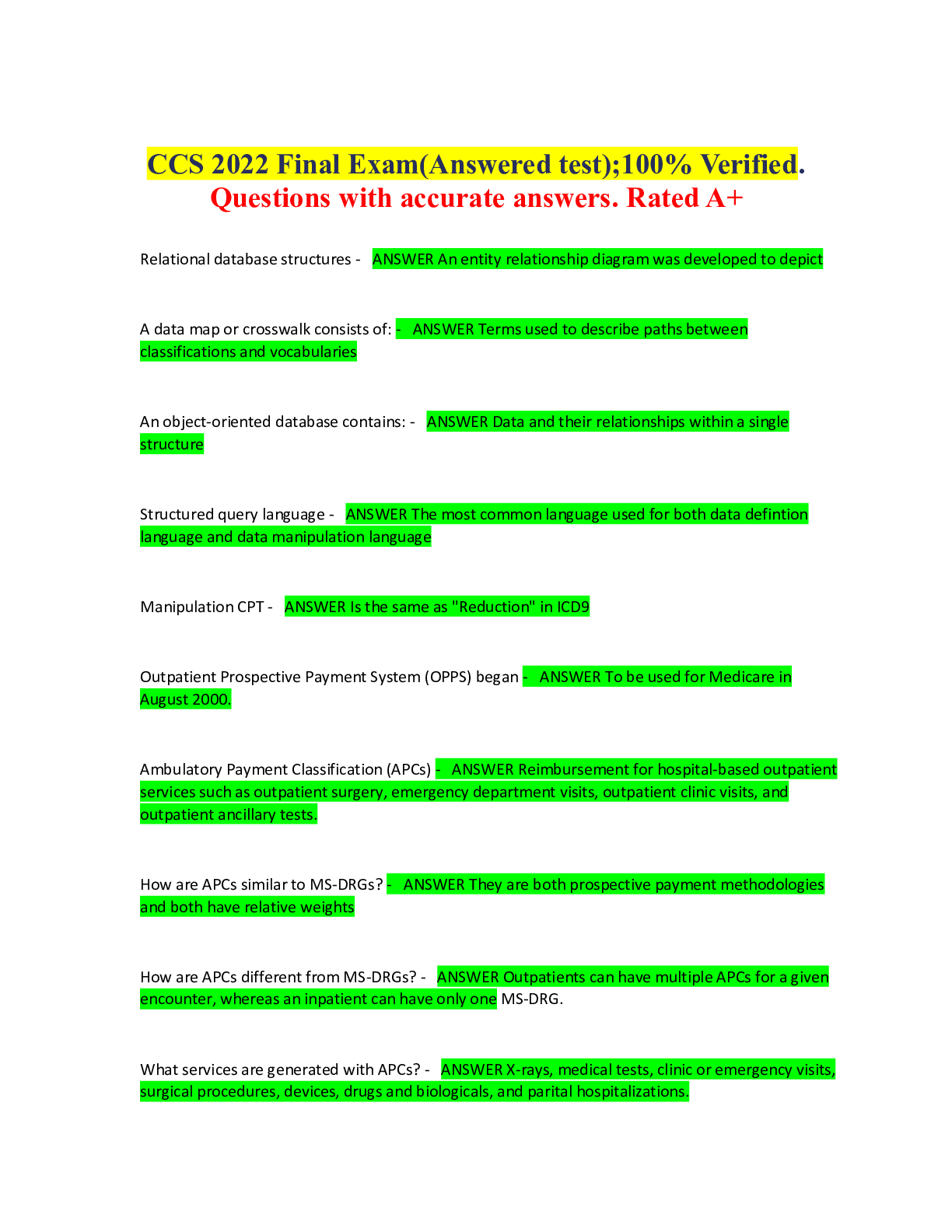Medical Studies > QUESTIONS & ANSWERS > MH701 Exam 3 Modules 6-8. Examinable questions and answers. Rated A+ (All)
MH701 Exam 3 Modules 6-8. Examinable questions and answers. Rated A+
Document Content and Description Below
MH701 Exam 3 Modules 6-8. Examinable questions and answers. Rated A+ What 2 parts of the brain are affected by drug use? - Ans-1) Limbic system Lizard brain 2) Cortex (Prefrontal) Wizard brain Wha... t are the parts of the reward pathway in the brain? - Ans-1)the ventral tegmental area (VTA), 2)the nucleus accumbens, and 3) the prefrontal cortex. What is the neurotranmitter involved with addiction? - Ans-All drugs that can lead to addiction increase dopamine (DA) in ventral striatum, also called the nucleus accumbens. Psychological dependence - Ans-Characterized by a continuous or intermittent craving (i.e., intense desire) for the substance to avoid a dysphoric state. physical dependence - Ans-A type of addiction in which the body itself feels a direct need for a drug behavioral dependence - Ans-Substance-seeking activities and related evidence of pathological use patterns are emphasized What are the hallmark of substance use disorders? - Ans-Behavioral, physical, and psychological dependence How long should a person abstain from alcohol before taking disulfiram? - Ans-12 hours How long can disulfiram remain in the system after the last dose? - Ans-1-2 weeks What baseline and continued labs should be done when taken before/during disulfiram? - Ans-LFTsNucleus Accumbens (NAC) - Ans-*The brain's Pleasure/Reward Center* *Receives dopamine-secreting terminal buttons from neurons of the VTA-Ventral Striatum *Involved in reinforcement and attention What does the prefrontal cortex do? - Ans-Powers our ability to think, plan, solve problems, and make decisions Tolerance - Ans-Need more of the drug to produce same effect as time goes on. When the body becomes less responsive to the drug with repeated exposure. Addiction - Ans-Compulsive drug craving and use, despite adverse consequences Postive rewards are mediated by? - Ans-Dopamine pathway Social rewards commonly associated with drug use, such as disinhibition, euphoric mood, and anxiety reduction. Negative rewards are mediated by? - Ans-GABA pathway Aversive/Anxiety/Dysphoria Where does reinforcement occur in the brain? - Ans-The ventral tegmental area and the nucleus accumbens of the brain, collectively called the reward center. What are the 4 major diagnostic categories in DSM-5 for substance use? - Ans-1. Substance Use Disorder 2. Substance Intoxication 3. Substance Withdrawal 4. Substance-Induced Mental Disorders Cannabis during pregnancy causes? - Ans-Lower birth weights How does methadone work? - Ans-Tricks the brain into thinking it's still getting the abused drug. In fact, the person is not getting high from it and feels normal, so withdrawal doesn't occur. -A synthetic opioid agonist [Show More]
Last updated: 2 years ago
Preview 1 out of 28 pages

Buy this document to get the full access instantly
Instant Download Access after purchase
Buy NowInstant download
We Accept:

Reviews( 0 )
$10.00
Can't find what you want? Try our AI powered Search
Document information
Connected school, study & course
About the document
Uploaded On
Jun 28, 2022
Number of pages
28
Written in
Additional information
This document has been written for:
Uploaded
Jun 28, 2022
Downloads
0
Views
143


